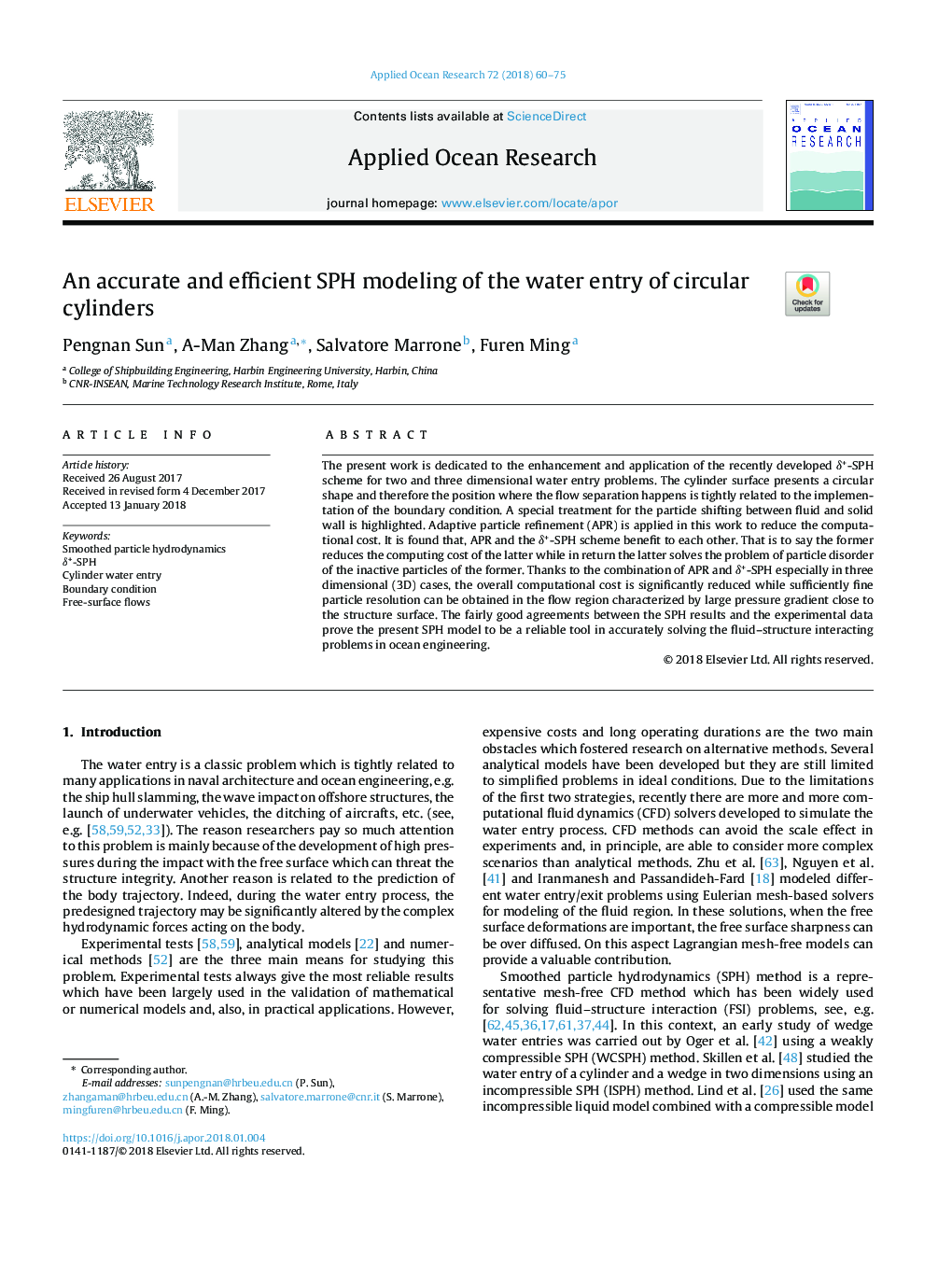| Article ID | Journal | Published Year | Pages | File Type |
|---|---|---|---|---|
| 8059319 | Applied Ocean Research | 2018 | 16 Pages |
Abstract
The present work is dedicated to the enhancement and application of the recently developed δ+-SPH scheme for two and three dimensional water entry problems. The cylinder surface presents a circular shape and therefore the position where the flow separation happens is tightly related to the implementation of the boundary condition. A special treatment for the particle shifting between fluid and solid wall is highlighted. Adaptive particle refinement (APR) is applied in this work to reduce the computational cost. It is found that, APR and the δ+-SPH scheme benefit to each other. That is to say the former reduces the computing cost of the latter while in return the latter solves the problem of particle disorder of the inactive particles of the former. Thanks to the combination of APR and δ+-SPH especially in three dimensional (3D) cases, the overall computational cost is significantly reduced while sufficiently fine particle resolution can be obtained in the flow region characterized by large pressure gradient close to the structure surface. The fairly good agreements between the SPH results and the experimental data prove the present SPH model to be a reliable tool in accurately solving the fluid-structure interacting problems in ocean engineering.
Related Topics
Physical Sciences and Engineering
Engineering
Ocean Engineering
Authors
Pengnan Sun, A-Man Zhang, Salvatore Marrone, Furen Ming,
